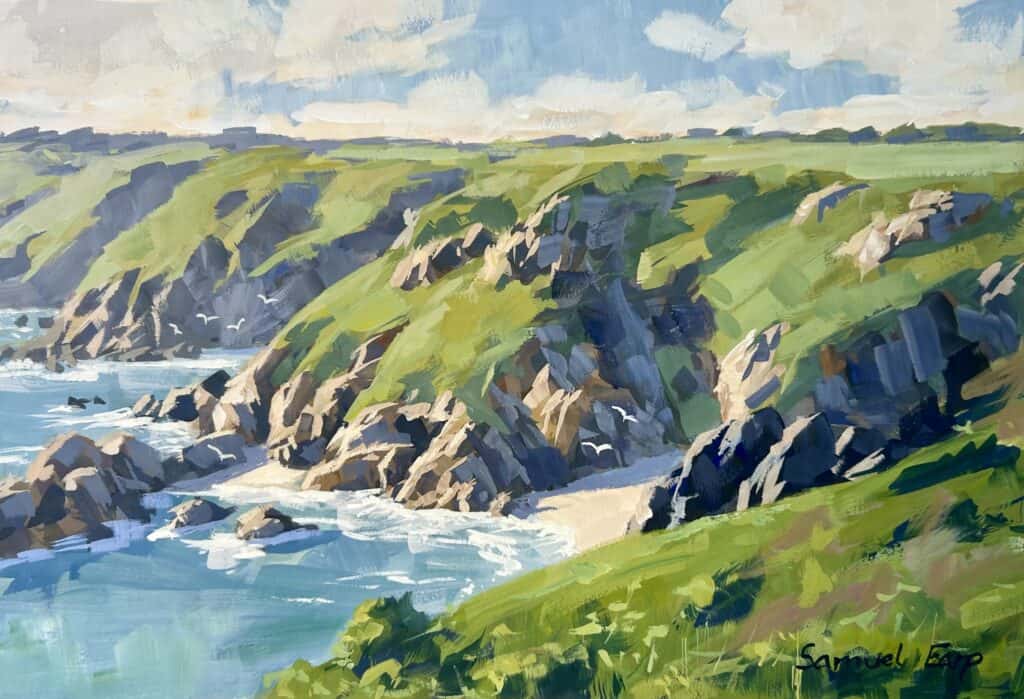
Are you struggling with stiff photographic landscapes that are just draining the life out of your paintings, making them look flat and uninteresting? You’re not alone. Many artists face this challenge, but there’s a simple solution—using gouache to bring vibrancy and life to your artwork! In this detailed guide, I’ll explain how you can achieve this by painting a mesmerizing coastal scene.
I’ve spent years wrestling with this exact problem, watching my landscapes fall flat despite following reference photos to the letter. It wasn’t until I discovered the unique properties of gouache that I finally understood how to breathe life into my work.
The key lies in gouache’s ability to be both opaque and translucent, allowing me to layer colors in ways that create depth and atmosphere. Through trial and error, I’ve developed techniques that transform static scenes into dynamic, living paintings that seem to pulse with energy.
Unlocking the Potential of Gouache
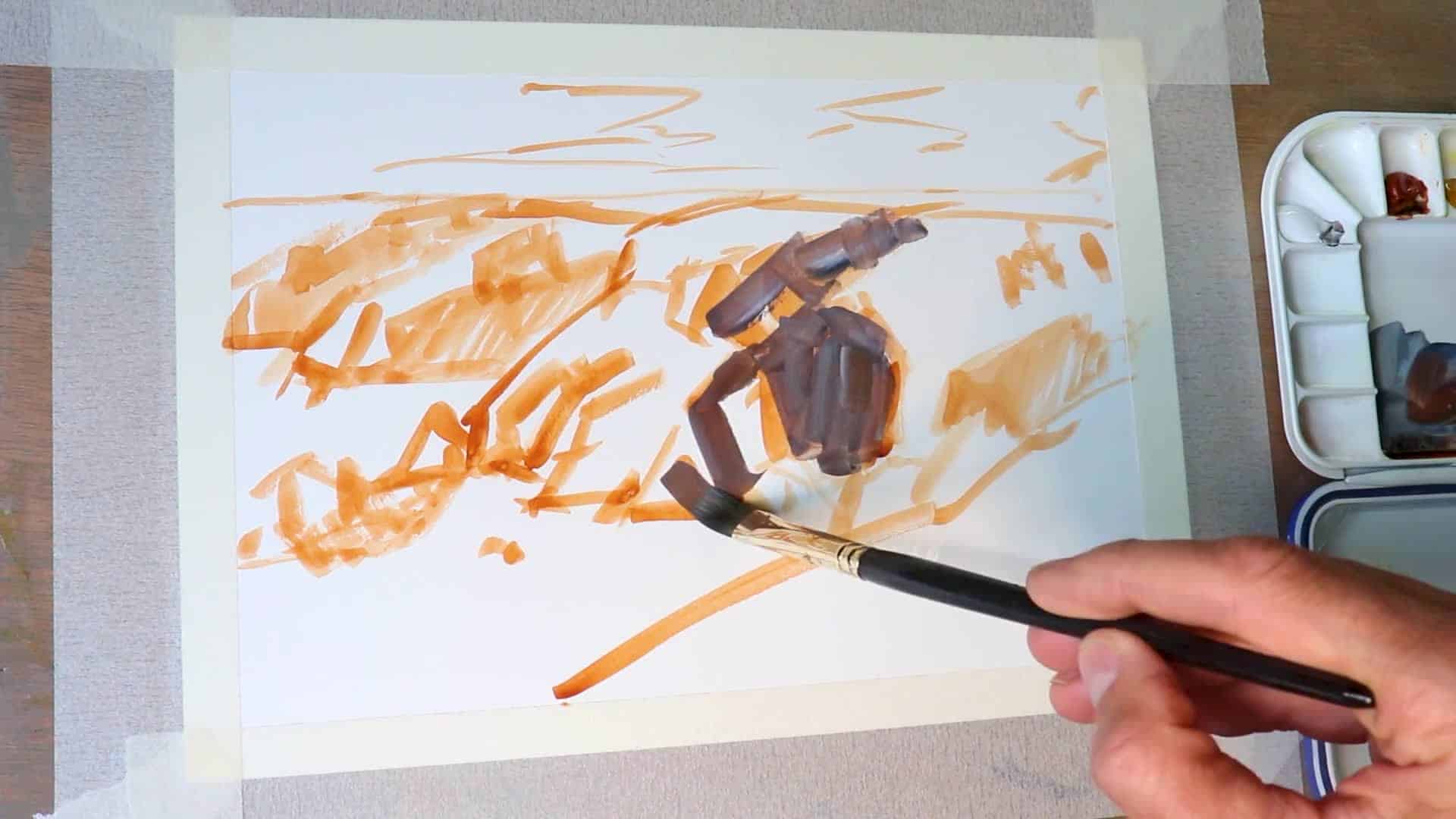
I’ve always been fascinated by how gouache can completely transform the way I approach landscape painting. There’s something magical about this medium that bridges the gap between watercolor and acrylic, giving me the best of both worlds.
What is Gouache?
Gouache is a paint medium that has been capturing the attention of artists worldwide. Essentially, it’s an opaque watercolor that offers vibrant, natural-looking colors with a matte finish. Unlike oil paints, which can be cumbersome and time-consuming, gouache allows for spontaneity—perfect for loosening up your brushwork.
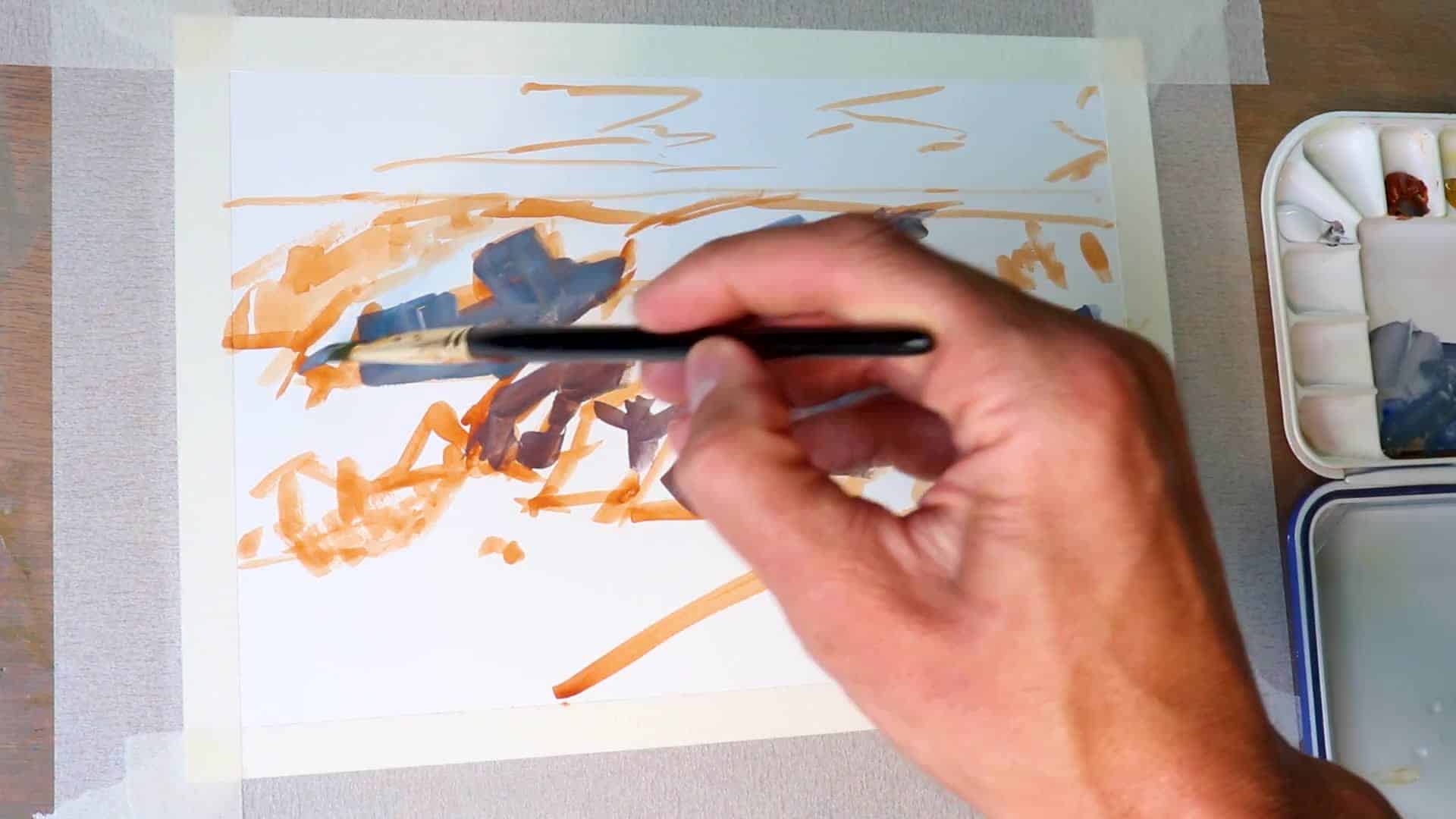
I find that gouache responds beautifully to both wet and dry techniques, allowing me to create everything from soft, atmospheric effects to bold, graphic statements. The way it reactivates with water means I can constantly rework areas, building up layers of color that create incredible depth.
What really excites me about gouache is how forgiving it is—I can make bold marks knowing I can always adjust them later. This freedom has completely changed how I approach my coastal scenes, making them more expressive and alive.
“When I first saw some gouache paintings on Instagram, I was absolutely blown away…”
My Journey from Oils to Gouache
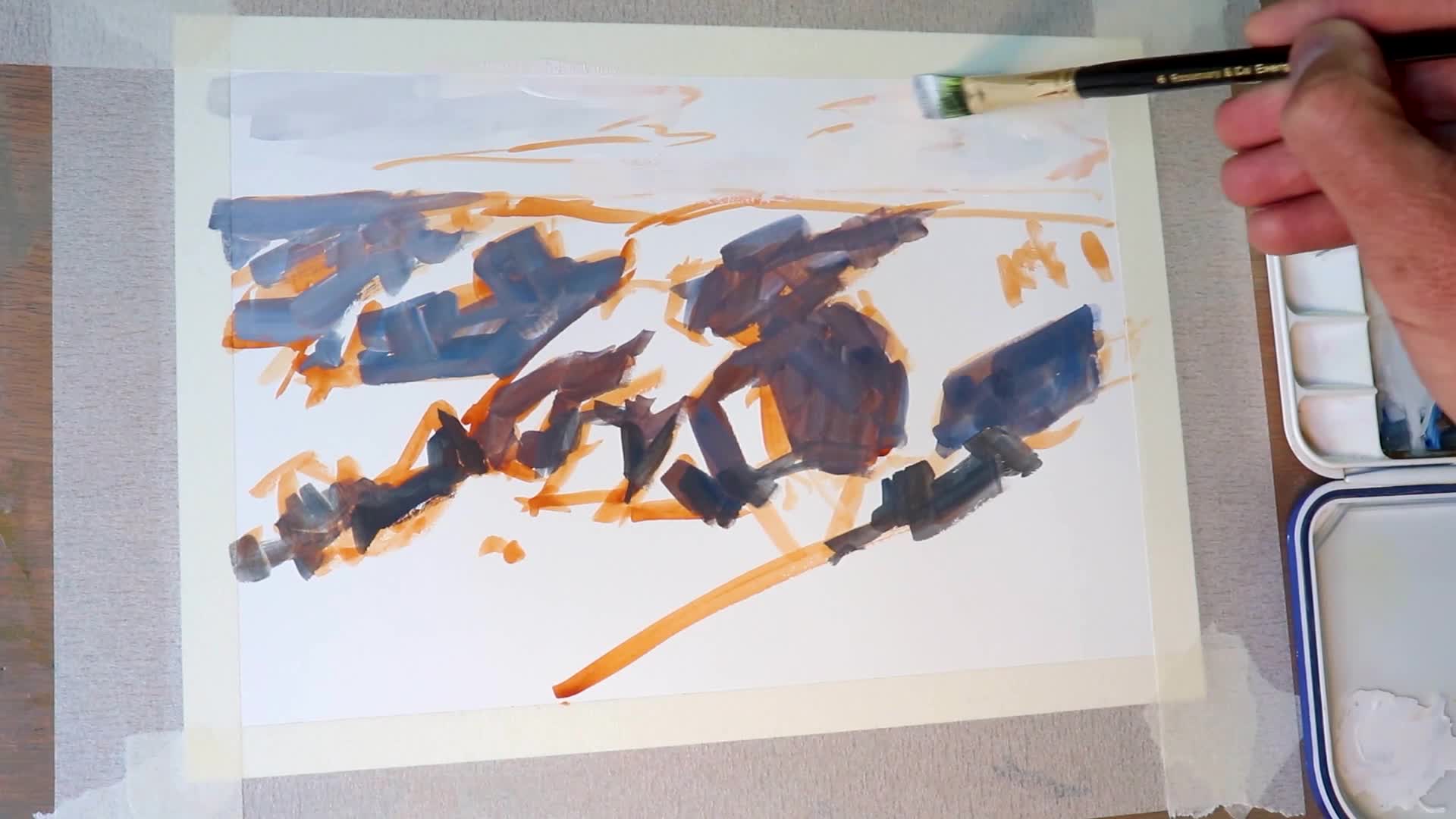
While my primary medium is oil, I’ve occasionally dabbled with gouache, and it’s enhanced my artistic process significantly. At first, like any artist engulfed in oils, I couldn’t distinguish whether some artworks were oil or gouache because of the beautiful, painterly effects that gouache can achieve. This discovery marked the beginning of an exciting exploration into the world of gouache paintings.
The Scene: A Slice of Guernsey
For this demonstration, I chose to paint the stunning southern coast of Guernsey—the island of my birth. As with oil painting, I started by laying down the darkest values and shadows, setting the tonal foundations essential for later elements in light.
There’s something deeply personal about painting the landscapes of my childhood, where every cliff and cove holds memories that seep into my brushwork. I’ve walked these coastal paths countless times, watching how the light changes throughout the day and seasons.
Setting Up Your Palette
For the cliff shadows, I employed a palette consisting of:
- Ultramarine Blue
- Burnt Sienna
- Alizarin Crimson
- Permanent White
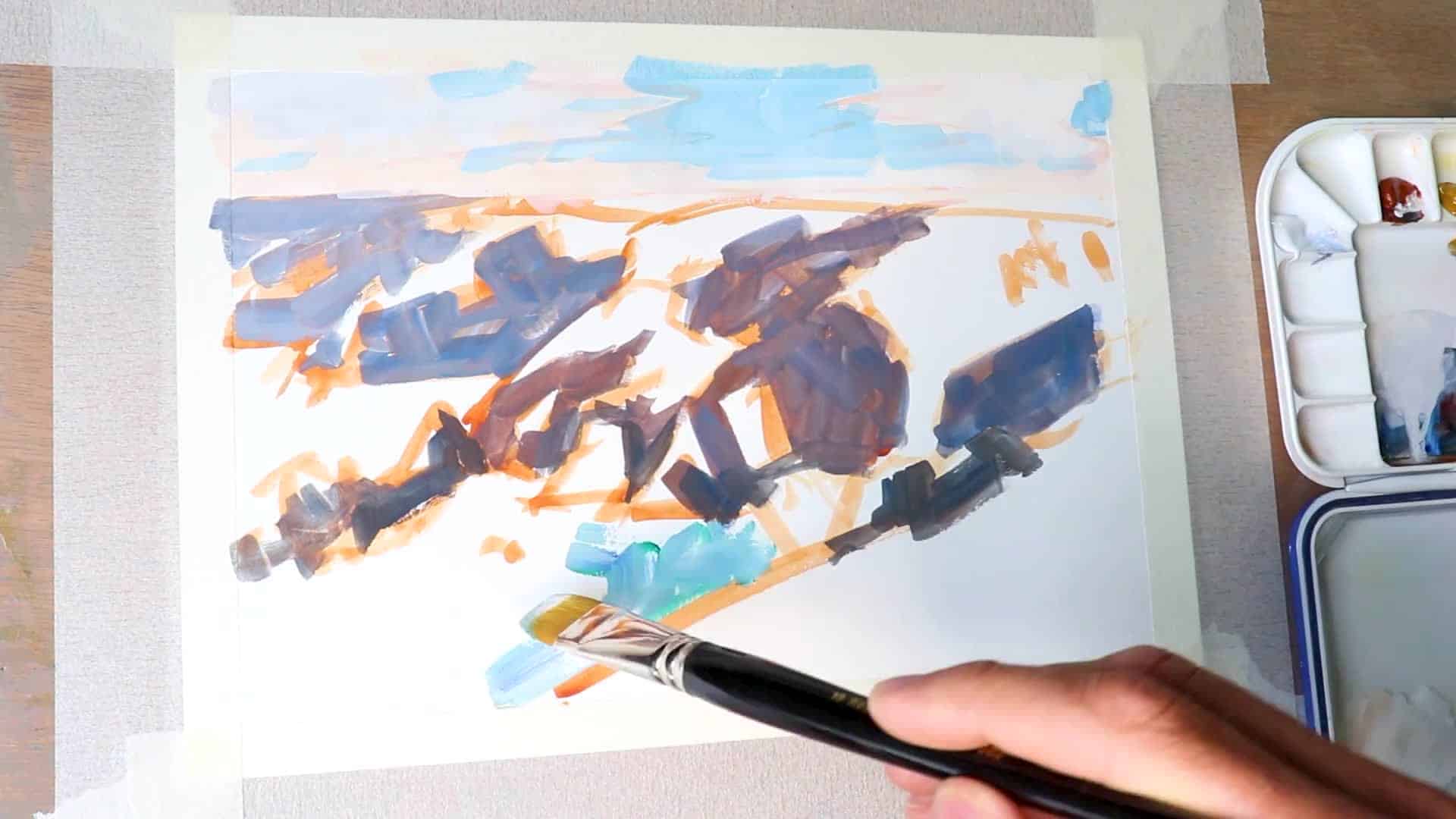
These choices allow varied tones and adjust the overall value, lending depth and mood to the artwork.
Tips for Tonal Values
The crucial principle is that the darkest darks and lightest lights reside in the foreground. As landforms recede into the distance, their colors desaturate, contributing to a sense of depth.
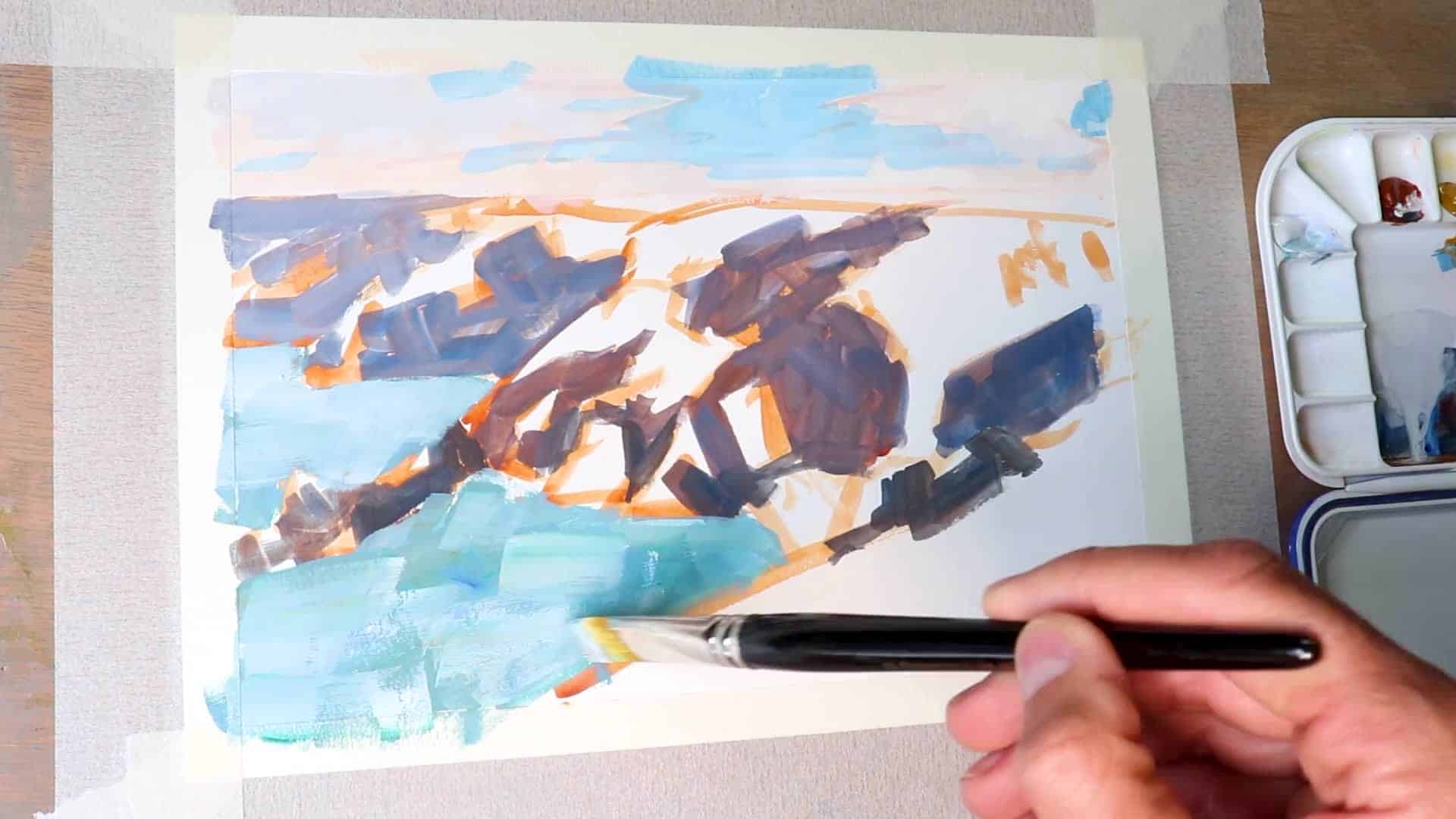
I’ve learned this lesson through countless plein air sessions, where I’d initially make distant mountains too dark and lose all sense of atmospheric perspective. Now I consciously push those background values toward the middle range, creating that hazy, ethereal quality that makes viewers feel they can walk right into the painting.
Crafting the Canvas: Brush Techniques and More
I’ve discovered that the right brush can make or break a gouache painting, especially when working with loose, expressive techniques. The way gouache responds to different brush types has completely changed how I approach texture and mark-making in my coastal scenes.
Brush Selection
I’m predominately using synthetic flat brushes, notably from Rosemary and Co. If interested, their brushes can usually be found with an online search. The synthetic nature offers flexibility perfect for achieving the loose brushwork essential in gouache.
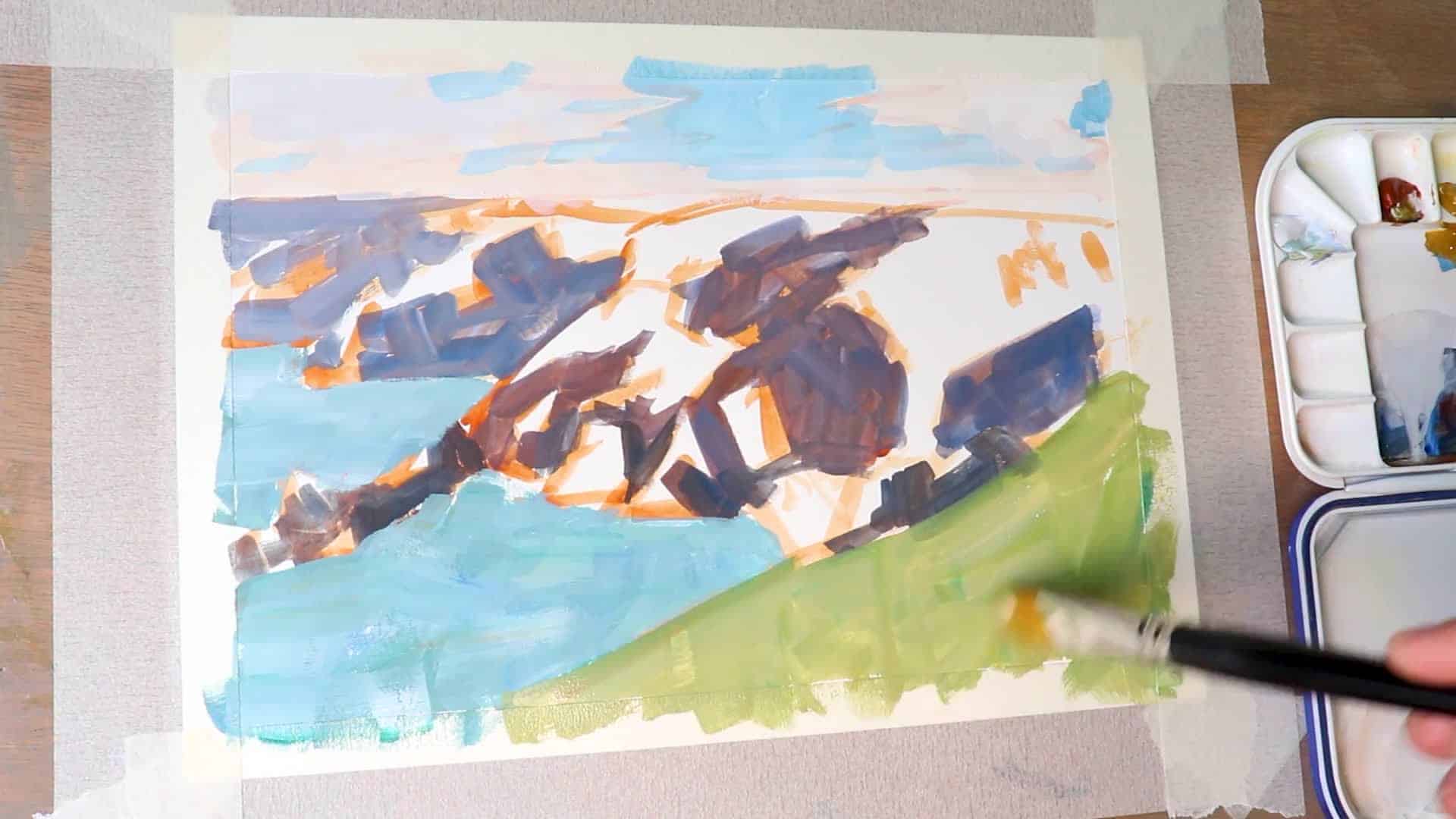
I’ve found that synthetic brushes hold their shape better than natural hair when working with gouache’s thicker consistency, allowing me to maintain crisp edges when needed. The flat shape gives me versatility—I can use the broad side for washes and the edge for linear details, making them perfect for everything from broad sky passages to the fine details of rocky coastlines.
Painting the Sky and Sea
To capture the vastness of the ocean, I mixed:
- Ultramarine Blue
- A touch of Yellow Ochre
- Viridian
- Permanent White
Starting with a loose wash, I aimed to quickly cover the paper, allowing detailing afterward.
Layering with Gouache
One delightful aspect of gouache is its quick-drying nature, allowing for efficient layering. Initiate with a loose wash, then progress with details and thicker paint applications—a method unlike traditional watercolors.
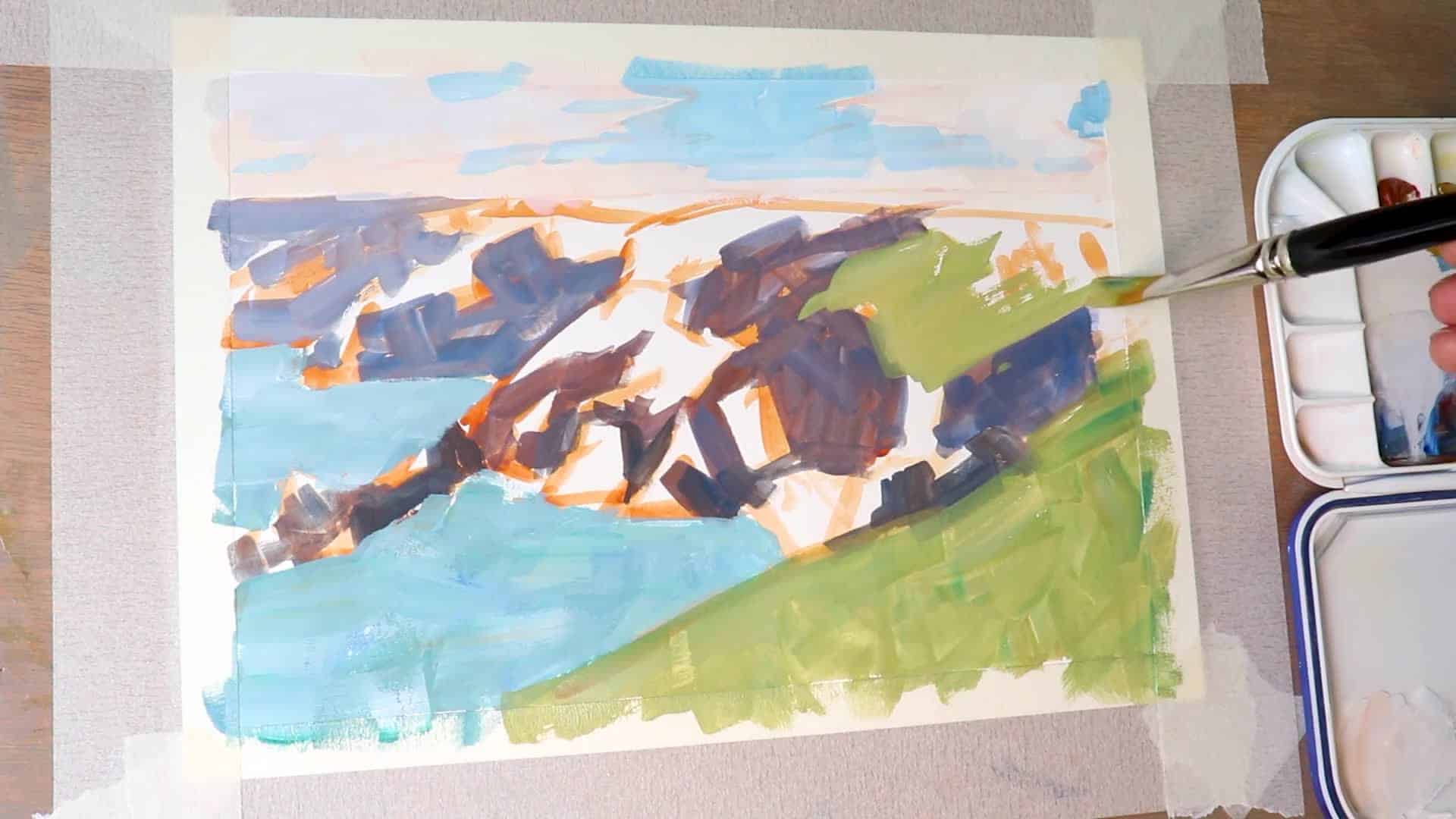
I love how I can build up my coastal scenes in stages, starting with thin washes for the sky and water, then adding increasingly opaque layers for the cliffs and foreground details. This approach gives me complete control over the painting’s development, allowing me to refine and adjust as I go without worrying about disturbing underlying layers.
Bringing the Landscape to Life
Next, I turned my attention to the foreground, particularly focusing on the rich coastal grass. Here, a vibrant green formed from:
- Yellow Ochre
- Cadmium Yellow
- Ultramarine Blue
- Permanent White
- An addition of Cadmium Red and Viridian for accents
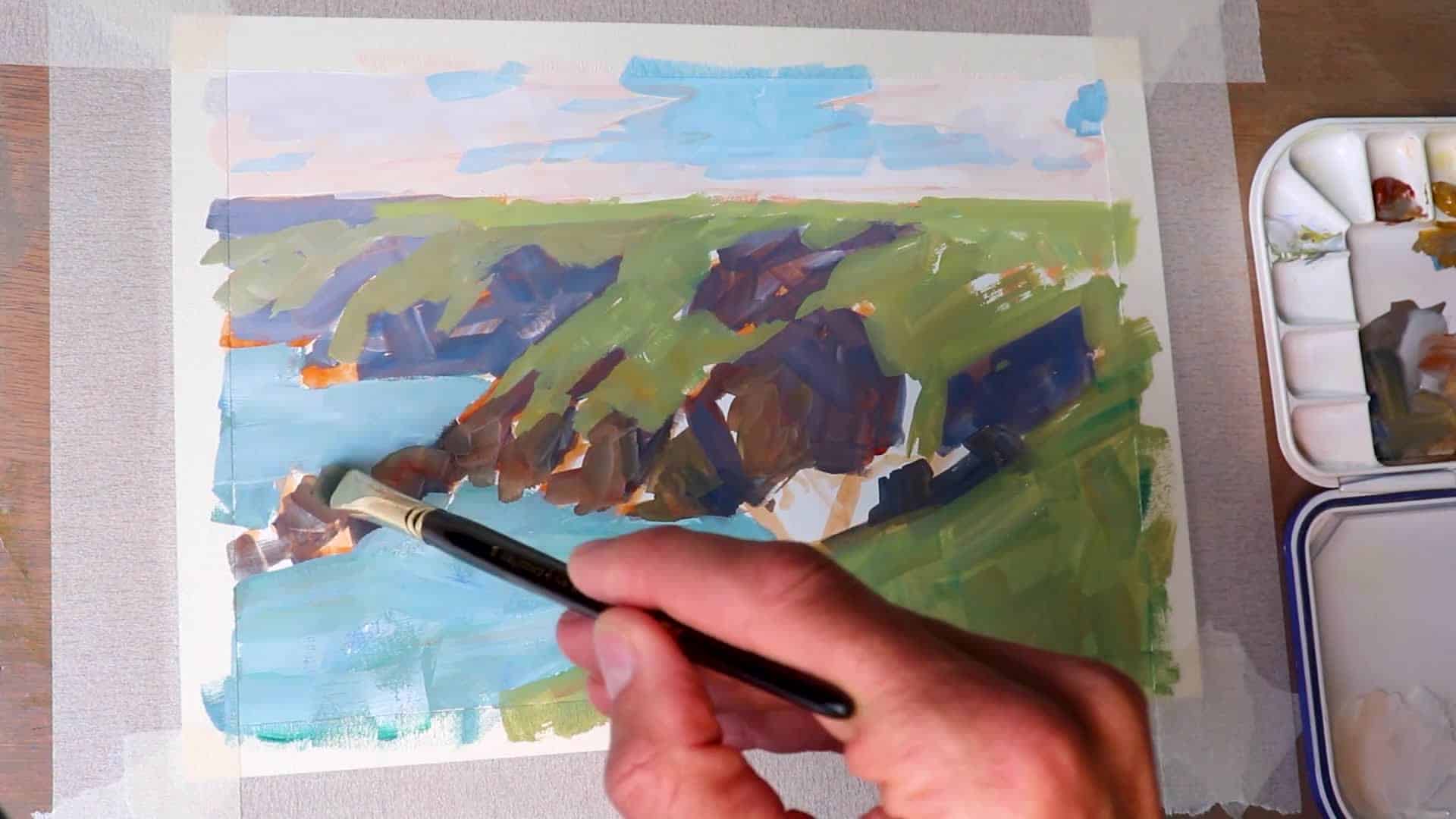
When painting mid and background greens, desaturation is key to avoid flattened perspectives. Introducing more Titanium White and even Alizarin Crimson helps manage color intensity effectively.
Overcoming the ‘Ugly Phase’
In every painting’s life, there’s often an ‘ugly phase’—when your work may appear amateurish. Persevere! Gouache’s layering ability will allow depth and corrections. I’ve learned to embrace this awkward stage rather than panic and abandon the painting, knowing that gouache’s opacity means I can paint over almost anything.
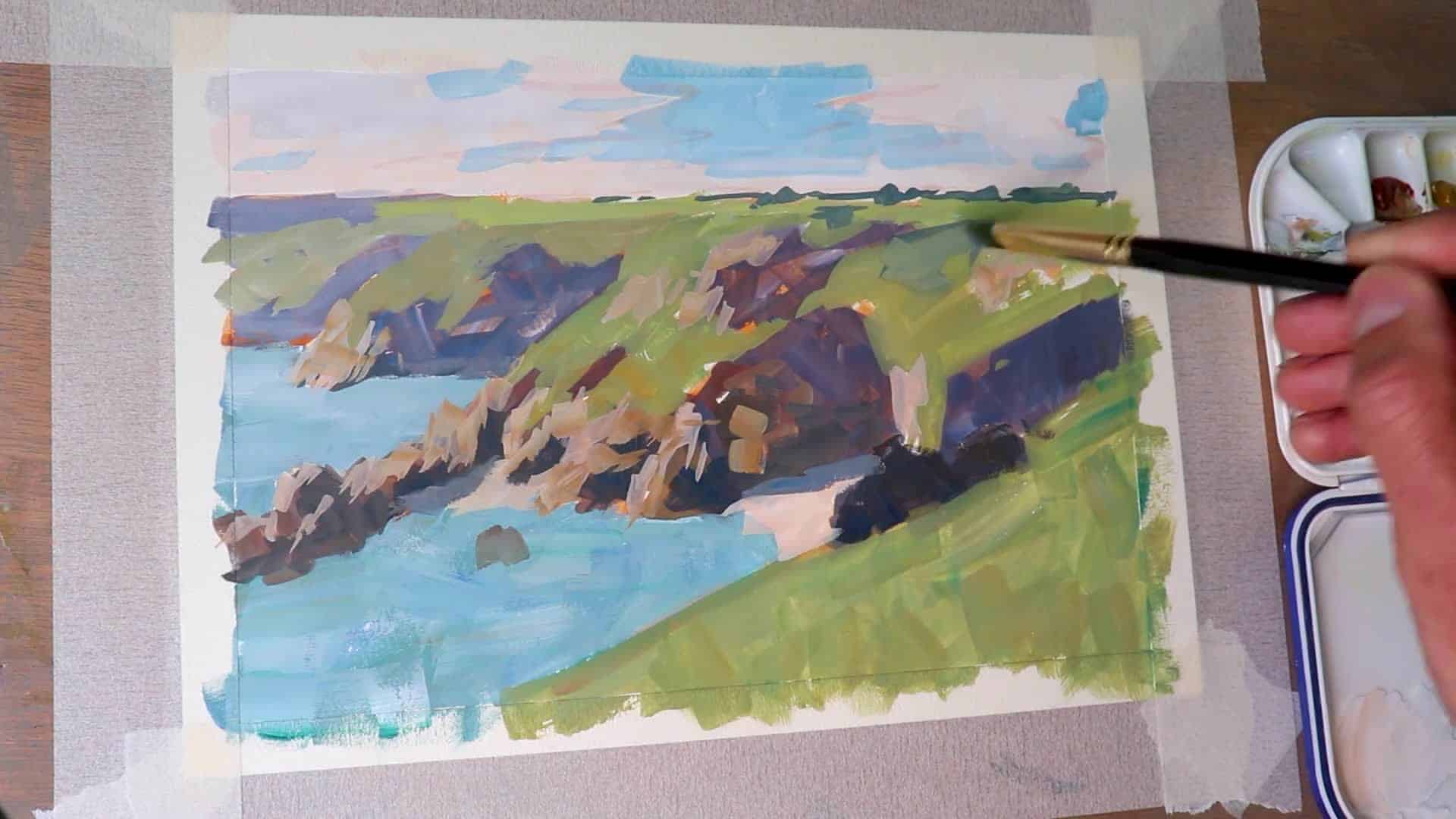
The key is to keep pushing through those moments when everything looks muddy or lifeless—often the most dramatic improvements happen in the final layers. I remind myself that this phase is actually where the real learning happens, as I figure out how to rescue and transform what initially seems like a disaster.
“If your color is too saturated, think about its color opposite and mix that in…”
Using Gouache for Larger Works
Incorporating gouache into your planning and conceptual process for larger projects can be invaluable. Quick, small-scale paintings in gouache serve as excellent studies for expansive oil works.
Adjusting for Final Touches
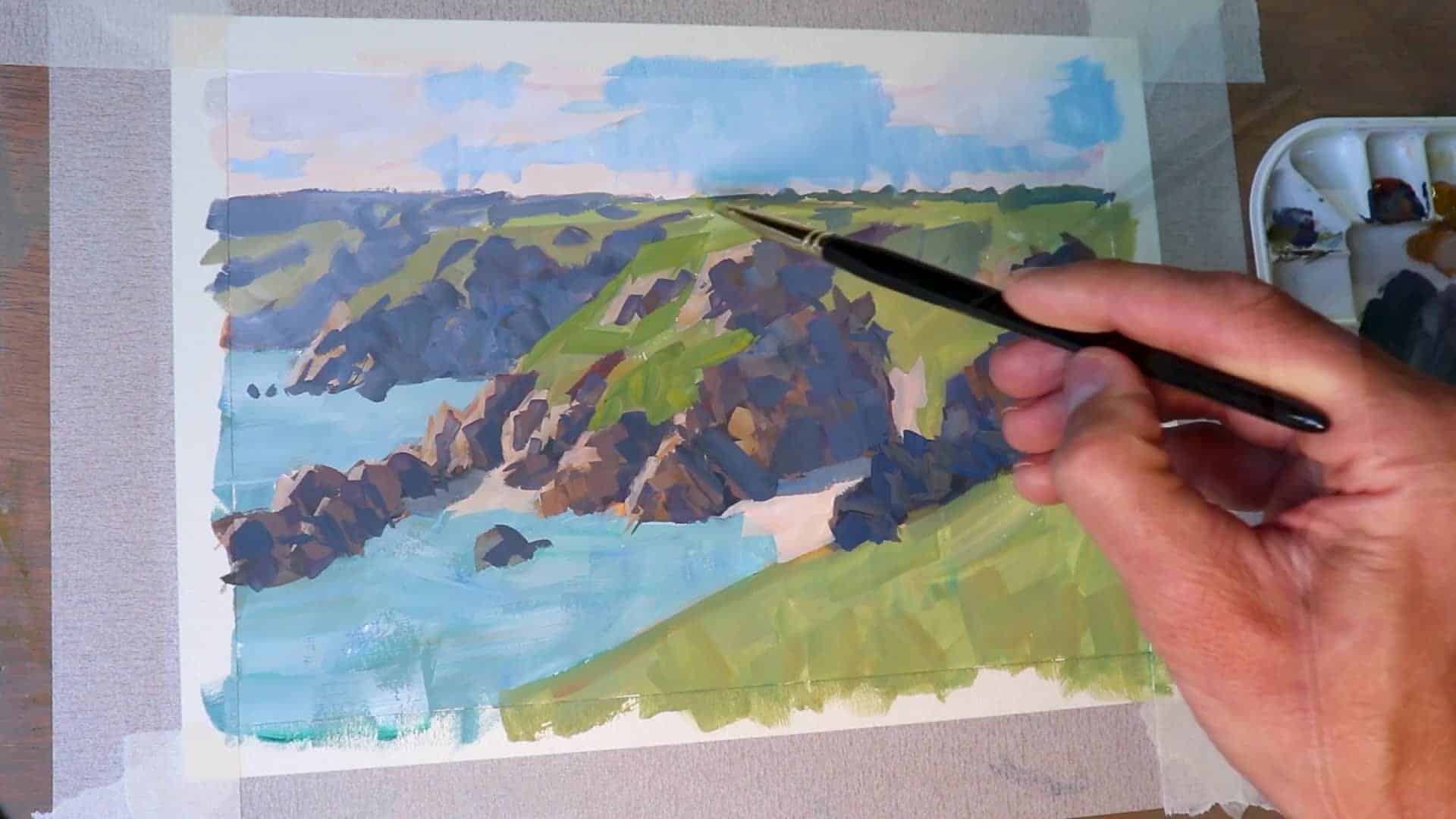
As I approached the concluding details, I used gouache’s flexibility to refine and add depth. Remember, gouache tends to dry darker, so some color value adjustments may be necessary.
- Sea and Water Texture: Increase saturation to depict dynamic, moving water.
- Highlights and Shadows: Stress on these to communicate scale and add intrigue.
Enhancing with Fine Details
Utilizing rigorous care, I added fine detail—grass blades, cliff textures, and eventually, lively elements like seagulls, breathing life into the landscape.
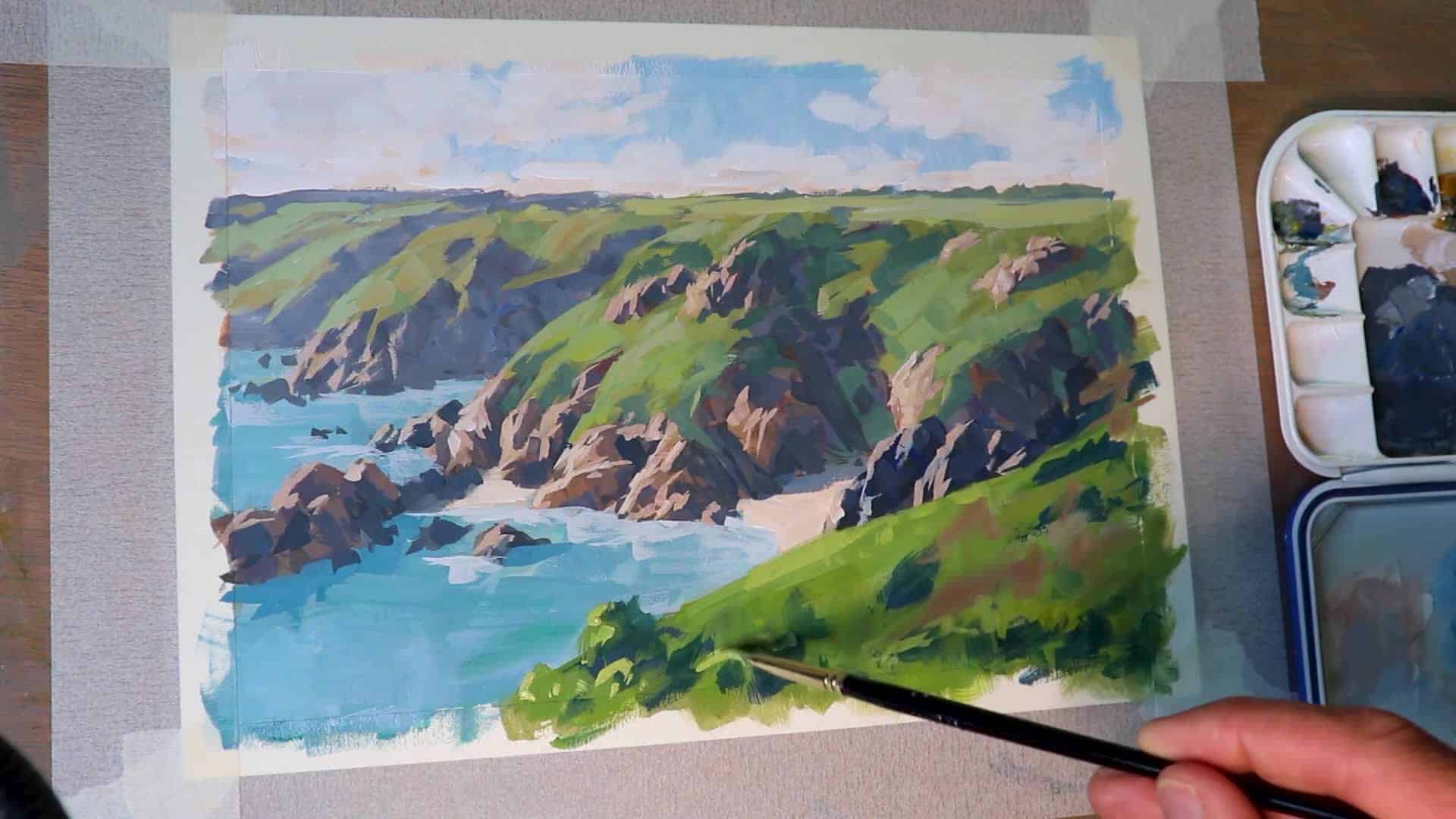
For these finishing touches, a mix of vibrant yet balanced hues completed the piece:
- Yellow Ochre
- Alizarin Crimson
- Use of Rigor Brushes for detailed work
Final Thoughts and Resources
Painting this beloved Guernsey landscape reminded me of the island’s innate beauty and its artistic draw. For those eager to expand their landscape painting skills—whether struggling with composition or tonal balance—I’m offering a free landscape painting blueprint.
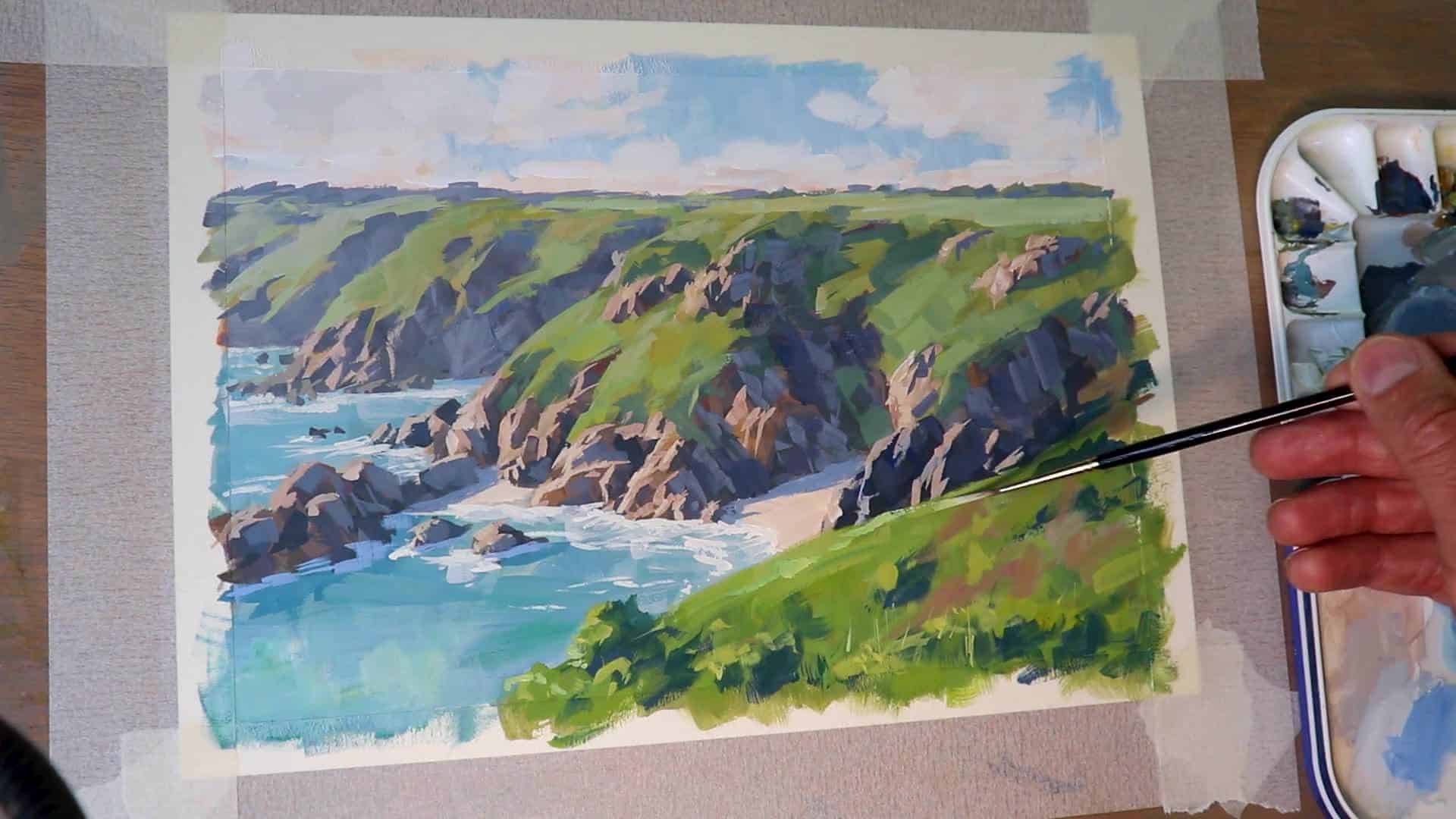
This project has reinforced my belief that gouache is truly an undervalued medium for landscape work, offering possibilities that I’m still discovering with each painting. I hope this demonstration inspires you to pick up your brushes and explore the unique qualities of gouache in your own coastal scenes. The freedom and spontaneity it offers can transform not just your paintings, but your entire approach to capturing the natural world.
This guide is demonstrated with oil paints but suitable for gouache and acrylic!
Get your FREE landscape painting blueprint here!
Watch the YouTube video
Thank you for joining me on this creative journey. Until next time, keep painting and let your landscapes breathe with life!
